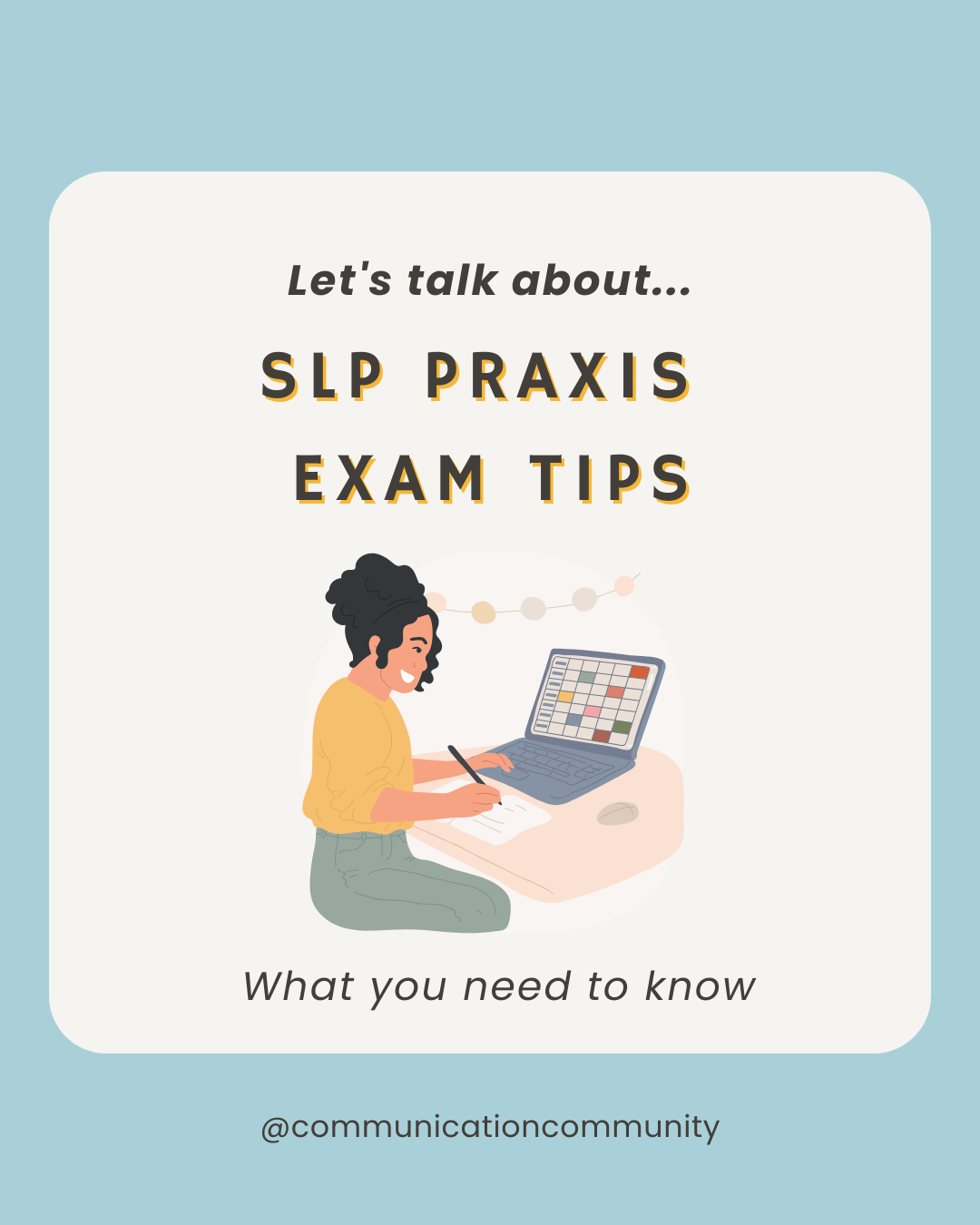Children may be diagnosed with a voice disorder because of an organic or functional etiology. An organic etiology may be a structural abnormality affecting the vocal mechanism and a function etiology may be from improper use of the vocal mechanism. Most voice disorders are mild and can be treated by SLPs. Continue reading to learn about symptoms, causes, and treatment of pediatric voice disorders.
How does your voice work?
Before we dive into the details of voice disorders, it is important to understand one’s voice and vocal mechanism components.
- Air travels from the lungs and to the larynx, which is sometimes referred to as the “voice box.” In the larynx are your vocal folds, aka vocal cords. The vocal folds vibrate, which produces sound. The sound then travels through your pharynx, mouth, and nose. You can make different sounds by moving your articulators (tongue, lips, and jaw).
- Individuals’ voices sound different due to a variety of reasons. Vocal folds vary in length and thickness. The size and shape of your pharynx, mouth, and nostrils are different than others. The differences in sizes and shapes can impact how your voice sounds.
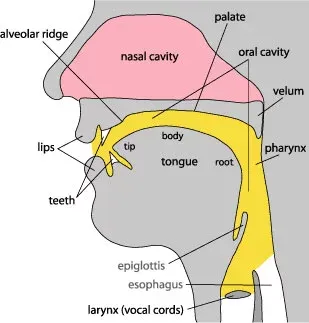
What are pitch, quality, and loudness?
When talking about voice and voice disorders, pitch refers to the frequency of your voice, or how high or low it sounds. Typically, children have higher-pitched voices than adults, and adults females have higher-pitched voices than males.
Vocal quality refers to how the voice sounds or can be perceived. Vocal quality can be described as “normal” or it can be perceived as rough, breathy, strained, wet, tremored, or more.
Vocal loudness refers to the average amplitude of an individual’s voice. It may be perceived as normal, too soft, or too loud.
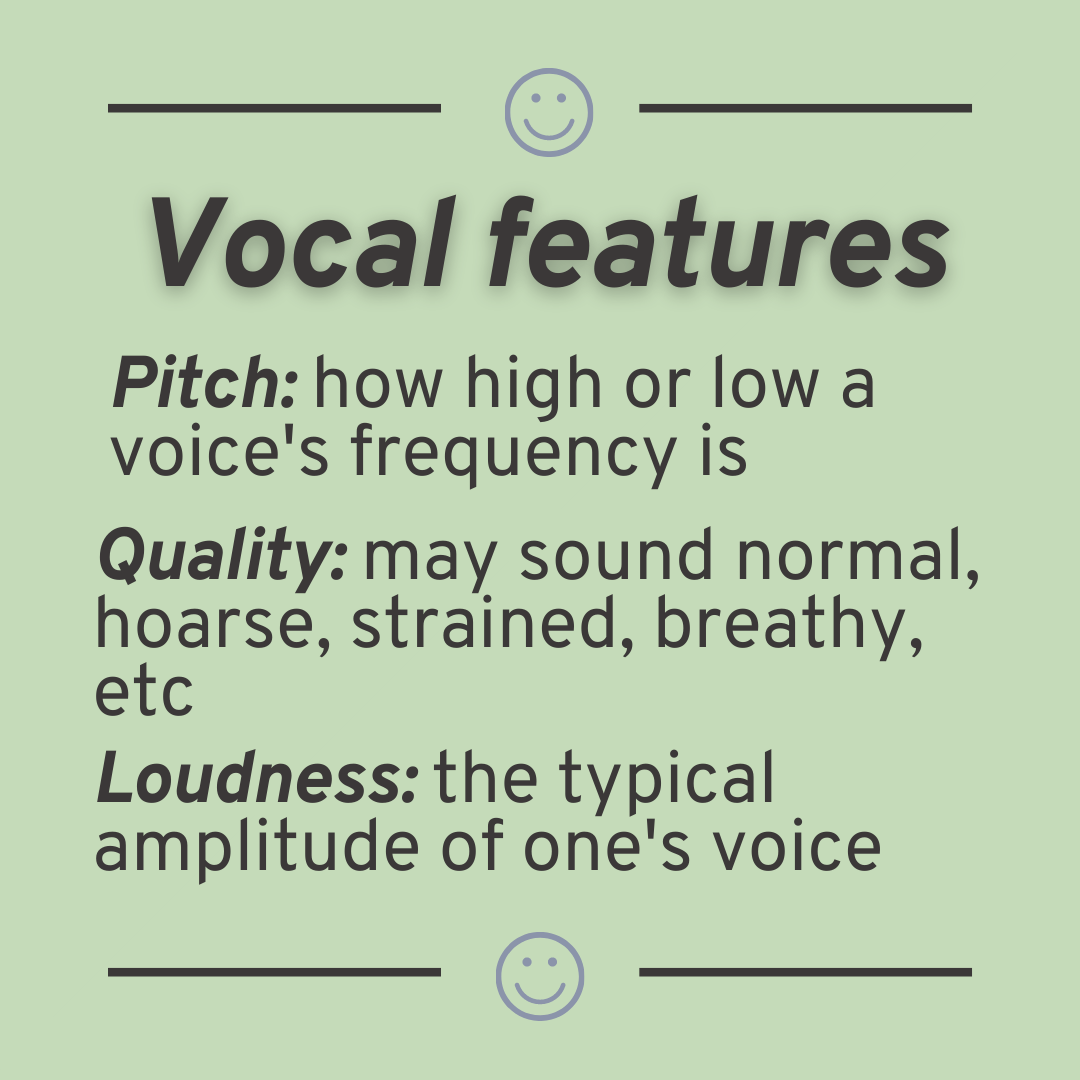
Causes of Pediatric Voice Disorders
As mentioned earlier, voice disorders can be caused by structural issues or by functional issues. Structural issues include vocal fold abnormalities caused by vocal nodules or swelling. Vocal nodules can be thought of as calluses on the vocal folds. There could also be inflammation in the larynx or trauma endured by the larynx.
Functional issues include phonotrauma, which is when someone yells excessively or clears their throat too often. Functional voice issues can also be caused by abnormal muscular tension in the larynx or by vocal fatigue, which sometimes happens when you speak too much.
The majority of pediatric voice disorders are caused by vocal strain. This may be due to yelling a lot, throat clearing excessively, or poor vocal hygiene. Poor vocal hygiene includes excessive strain, as well as poor breath support while speaking, and not hydrating enough.
Symptoms of Pediatric Voice Disorders
Some symptoms of pediatric voice disorders include:
- Hoarse voice on a regular basis
- Breathy, rough, wet, or strained voice on a regular basis
- Intermittent voice loss following events such as sports, singing, or activities that require someone to raise their voice a lot
- Voice pitch is noticeably higher or lower than peers
- Unable to adjust pitch or loudness voluntarily
Assessment of Pediatric Voice Disorders
A trained SLP can complete a comprehensive assessment of voice, which will include a case history, quantitative and qualitative measures. These quantitative and qualitative measures may include instrumental and perceptual assessments.
Instrument assessments that may be used to examine a child’s voice and vocal mechanism include laryngeal imaging via a videolaryngoendoscopy or videolaryngostroboscopy, an acoustic assessment, and an aerodynamic assessment. There are various softwares and instruments used in acoustic and aerodynamic assessments, including PRAAT software and the Phonatory Aerodynamic System.
Perceptual assessments may involve the use of the Consensus Auditory-Perceptual Evaluation of Voice (CAPE-V), which studies a child’s pitch, quality, and loudness.
This is an example of a videolaryngostroboscopy
This is an example of a voice assessment, which includes the use of the PRAAT software.
Why assess pediatric voice disorders?
Communication may be negatively impacted if a child has a voice disorder. A voice disorder may make a child harder to be understood, unable to participate in sports or drama activities, and may limit their interactions with others in the classroom. It can also hurt a child’s self-image and self-esteem.
Treatment for voice disorders
For most pediatric voice disorders, SLPs can provide intervention that improves the child’s pitch, quality, or loudness. In more severe cases, a child may be referred to other medical providers, like an otolaryngologist (ENT) for further treatment.
Treatment typically involves providing counseling and education about proper vocal hygiene and trying to decrease behaviors that lead to vocal strain, like yelling too much. Other treatment may focus on teaching children how to provide proper breath support for their voice so that it does not become strained or sound too breathy. SLPs may also provide education to caregivers so they can best support the children who are working to improve their voices.
*Coming soon: pediatric voice disorders goals!
Citations/further resources:
https://www.asha.org/practice-portal/clinical-topics/voice-disorders/#collapse_4
https://speechandvoicetherapycenter.com/pediatric-voice-disorders/
https://alahns.org/wp-content/uploads/CLC/14_Acoustic-and-Aerodynamic-Analysis.pdf
https://leader.pubs.asha.org/doi/full/10.1044/leader.FTR1.15142010.12

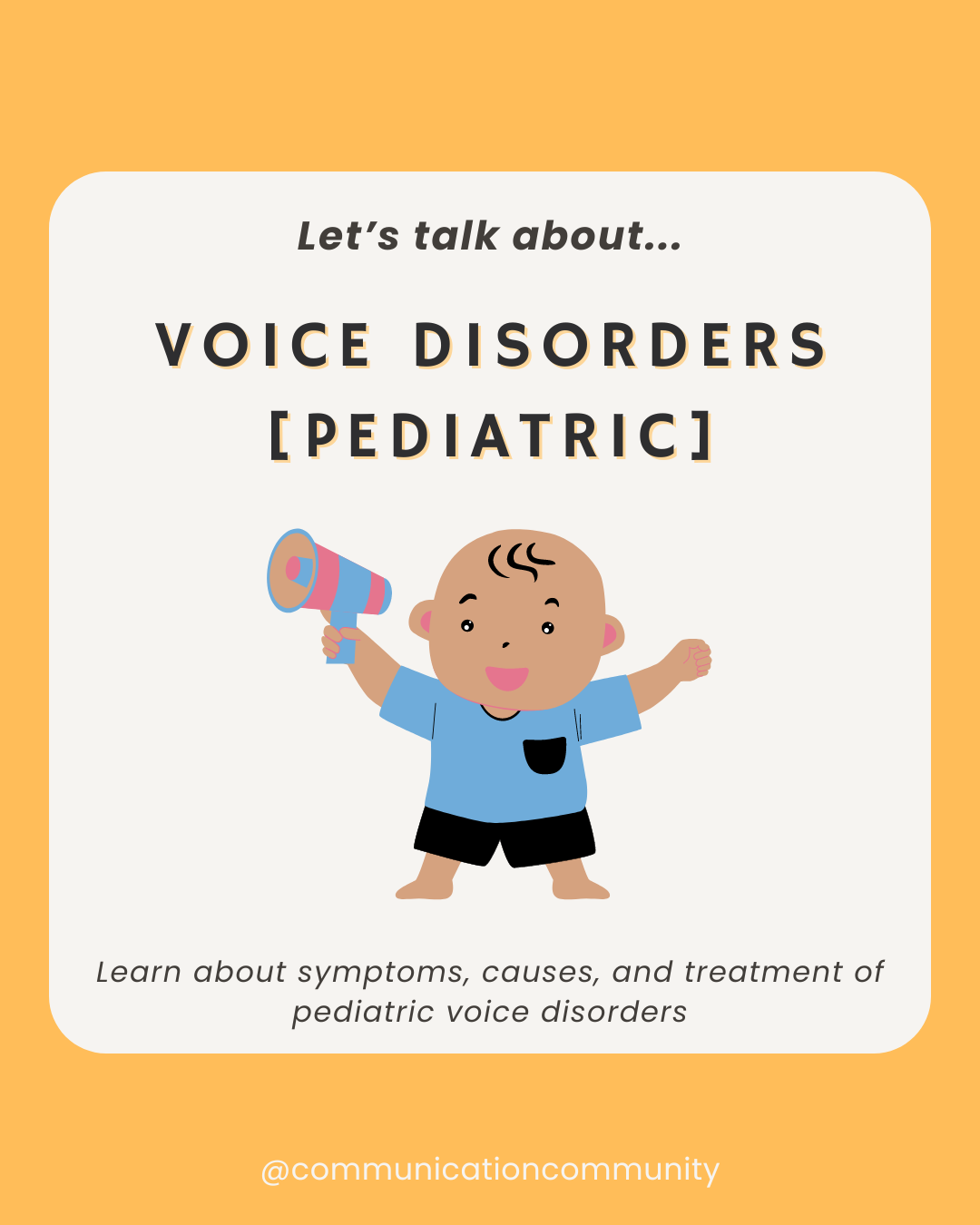

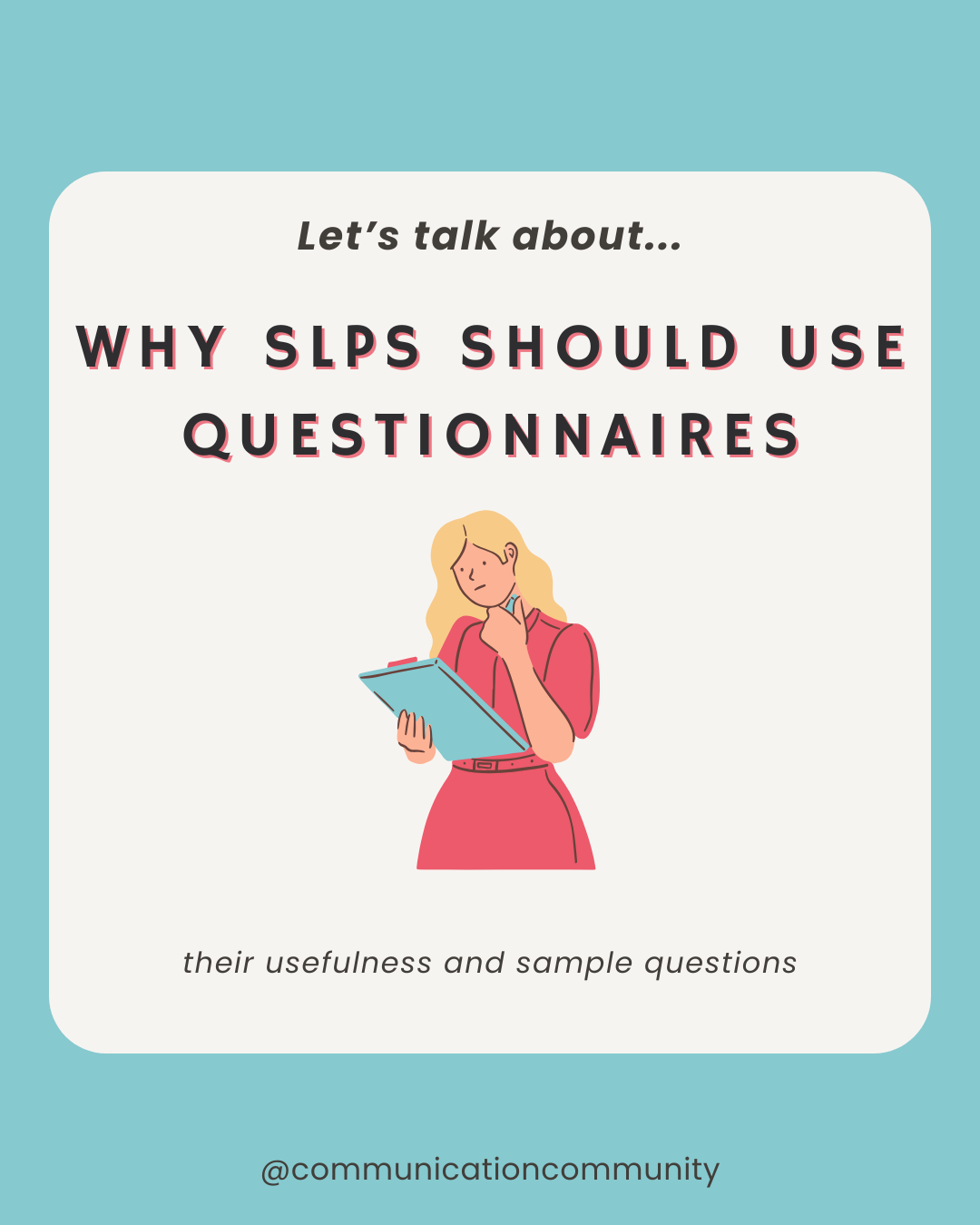

![How to Write Apraxia Goals [with goal bank]](https://www.communicationcommunity.com/content/images/2025/07/Apraxia-Goals--2-.png)
